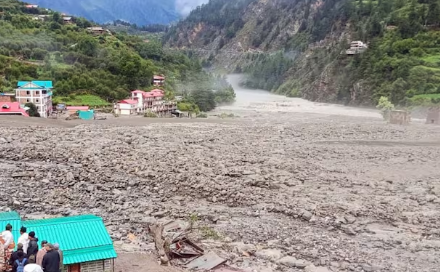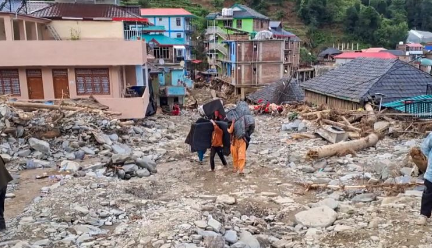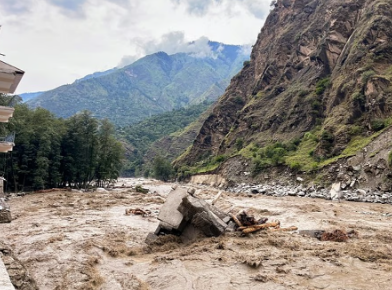On June 25, 2025, Himachal Pradesh’s Kangra and Kullu districts were struck by sudden cloudbursts, triggering devastating flash floods. In Kangra’s Khaniyara region, water surged through Manuni Khad, sweeping away workers from a nearby hydroelectric project. Two bodies were recovered, while about 15–20 laborers remain feared missing

On August 5, 2025, the tranquil Himalayan village of Dharali in Uttarkashi was suddenly devastated by a flash flood, triggered by what was initially identified as a cloudburst. In just minutes, torrents of water, mud, and debris swept through the settlement, destroying hotels, homes, and even the local market, leaving at least five dead and up to 100 people missing.

In the Himalayas, landslides have stopped being rare accidents. They are becoming routine, almost predictable. Himachal Pradesh saw more than 400 deaths in July–August 2023 alone, triggered by torrential rains and worsened by reckless slope-cutting for roads and buildings. Uttarakhand has been on the same path. By 2025, nearly 65 per cent of monsoon days featured extreme weather events almost double the proportion in 2022, according to data from the state’s emergency operation centre. Flash floods and landslides in Uttarkashi this season killed at least 48 people, while more than 100 remain missing.

A cloudburst is an unusually intense and very short-duration rainfall event over a small area. In the Indian context, meteorologists often define it as more than 100 mm of rain in one hour over an area of roughly 30 km² or less. The mechanism involves warm, moisture-laden air that is forced upward (often by steep terrain), cools rapidly, forms deep cumulonimbus clouds, and then “bursts” when it can no longer hold the condensed water — releasing an enormous downpour in a brief span. In mountainous regions this sudden deluge can trigger instant runoff, flash floods and landslides — because the steep slopes and narrow valleys accelerate water and debris flow.

 Technology is a useful servant, but a dangerous master, it was rightly said. Electronic devices have grown into an inevitable part of our daily lives.
Technology is a useful servant, but a dangerous master, it was rightly said. Electronic devices have grown into an inevitable part of our daily lives.


